Unexploded munitions continue to reverberate in Switzerland
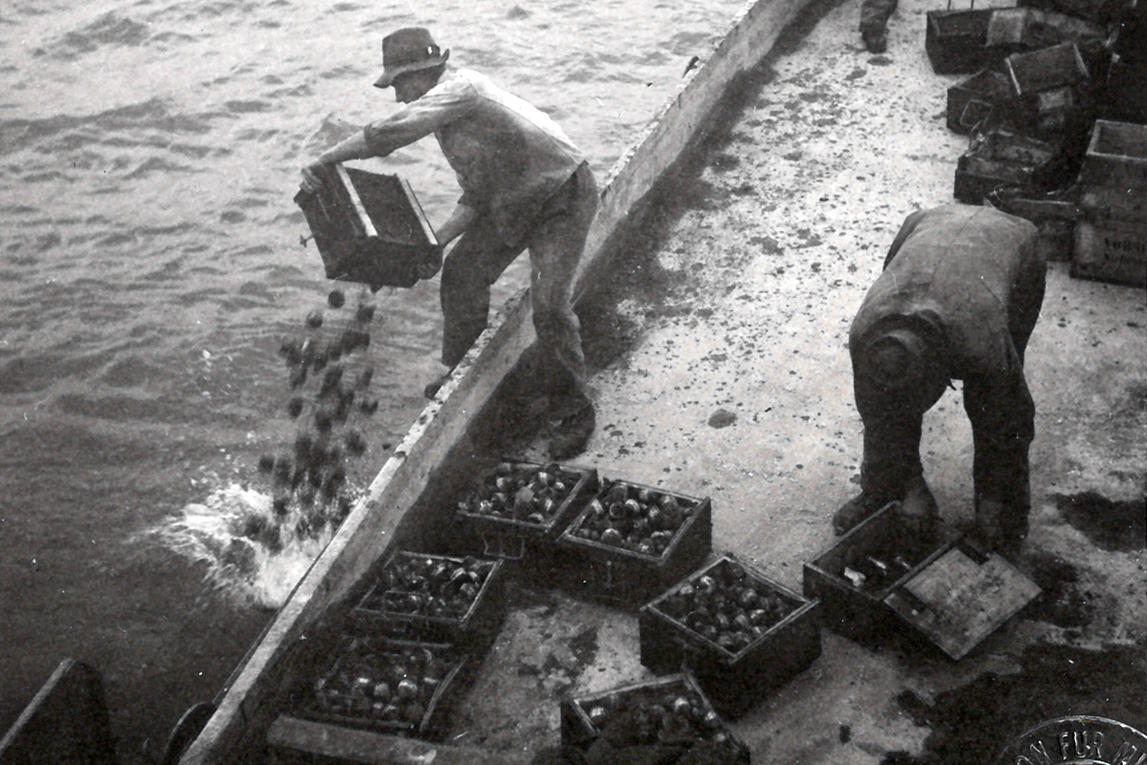
Old Second World War bombs, grenades and other explosives that lie dormant at the bottom of Swiss lakes or under the Alps are still causing headaches for the Swiss authorities.
On Tuesday, the residents of MitholzExternal link in the Bernese Oberland received the bad news from Defence Minister Viola Amherd in person. The 170 locals may have to leave their mountain village for over a decade while a nearby underground depot containing 3,500 tonnes of Second World War ammunition and explosives is cleared.
The planned operation, which could cost CHF1 billion ($1.03 billion) came after numerous studies and a report by the Federal Office for the EnvironmentExternal link which concluded last year that the aging ordinance, part buried under fallen rocks, posed a bigger danger than previously assumed.
The sensitive issue has been rumbling on for years. Mitholz was the scene of a tragedy in 1947 when part of the 7,000 tonnes of explosives stored in the depot blew up, killing nine people and destroying the local railway station and most homes.
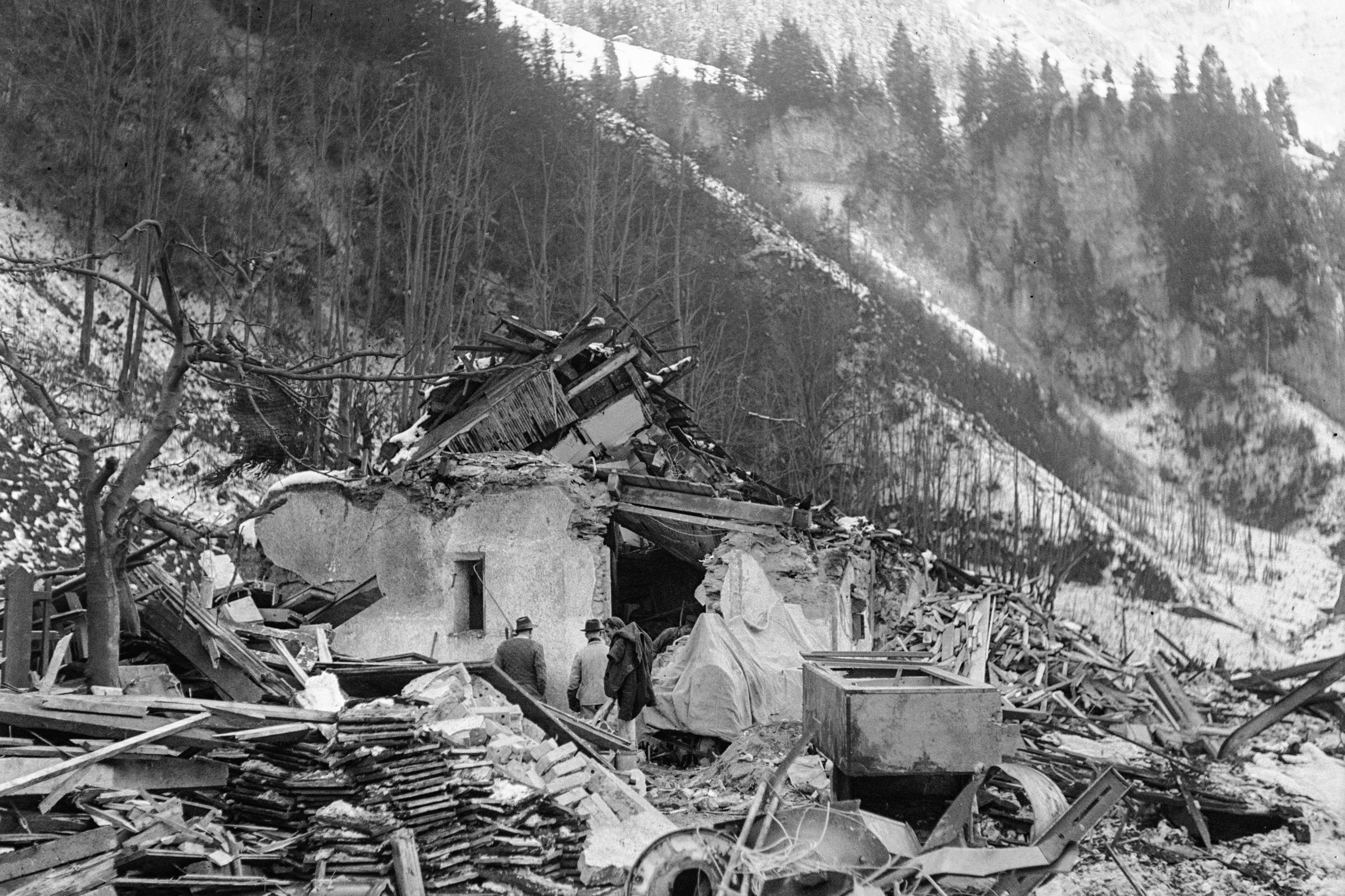
More
When the night exploded – 70 years ago
Today, the defence ministry says the risk of a second explosion has been underestimated for decades. It has now become “unacceptable” and “total evacuation” is the best solution.
The ministry calls Mitholz a “special caseExternal link”. Elsewhere in Switzerland, it says it monitors former contaminated sites, and the handful of other old depots have been largely cleared of munitionsExternal link.
Huge arsenal
The story of Mitholz dates back to the end of the Second World War when Switzerland found itself with a huge stock of unused weapons and ammunitions on its hands. The dangers were starkly exposed in 1946, when an explosion ripped through a fort at Dailly in canton Valais, killing ten people. Mitholz blew up the following year, and another blast was reported at a depot in Göschenen in 1948.
“The press got hold of the topic, so the question of securing depots and eliminating obsolete weapons became a priority for the federal authorities,” PhD researcher Elodie Charrière, who has written a thesis on the issue, recently told the 24Heures newspaperExternal link.
The idea of disposing of the piles of old dangerous ordinance by submerging it in Swiss lakes, which first started in the 1920s, then quickly gathered pace.

“At that time the environmental awareness that we have today didn’t exist,” said Charrière. “Nor did the notion that submerged munitions could pose a risk and generate pollution.”
Between 1948 and 1967, the army dumped an estimated 8,120 tonnes of munitionsExternal link in lakes Thun (4,600) Lucerne (3,300), Brienz (280 tonnes) and Walen (1.2 tonnes). Private firms also got rid of munitions in Lake Zurich (97 tonnes), the Rotsee near Lucerne (6.5 tonnes) and Geneva (150-1,000 tonnes).
There were no specific procedures for the operations, which were not secret. Ordinance was generally transported by truck and loaded onto boats; sometimes whole cases were dropped overboard, or individual ammo was thrown into the water. Most of the munitions came from factories in Thun in canton Bern and Altdorf in canton Uri.
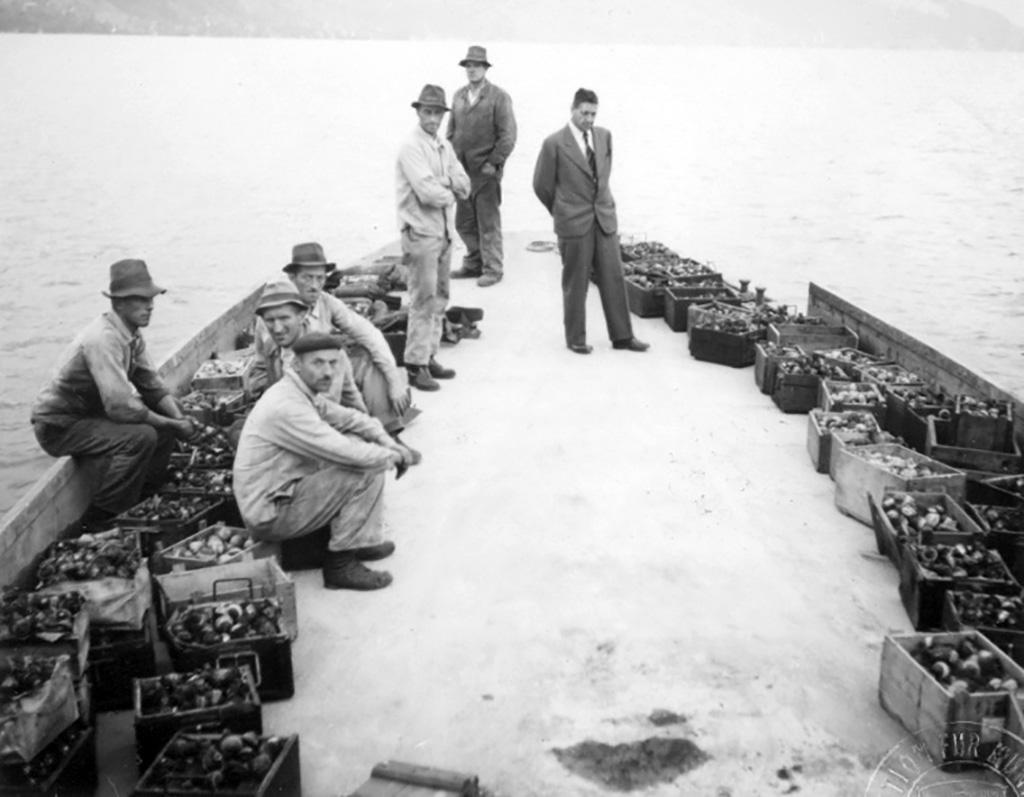
Later, the issue of lake munitions resurfaced in the press in the 1990s. The following decade reports emerged of whitefish in Lake Thun suffering from various deformities. But the munitions, despite initial suspicions, were not found to be source of their troubles.
Alert to potential risks, from 2005-2010 the authorities stepped up monitoring and investigations in lakes. Since then, regular field reports and tests of sediment and water samples have reached similar conclusions: there is no pollution to lakes monitored by the federal authorities, and bringing up the old shells and other munitions would be a risky exercise for the local population and contractors, with possible environmental damage also a concern.
Evidence has shown that the dumped munitions presently lie at depths of up to 200 metres and have been covered by mud and sediment of up to two metres thick, making them difficult to recover.

Lake Geneva
But munitions thrown into Lake Geneva years ago have sparked recent concern. Between 1950 and 1970, some 150-1,000 tonnes of army munitions are thought to have been submerged not far from Geneva’s city centre by the private firm Hispano-Suizo.
The cantonal authorities and the defence ministry investigated the case between 2002-2004 and revealed the type of munitions dumped but not their exact locations. They concluded that the situation was under control, as the munitions lie buried under sediment, and that so far drinking water quality has not been affected. But last November a team of French diversExternal link discovered four damaged, open crates at a depth of 50 metres, about 150m from a pipeline and a drinking water sensor.
In January, a group of anxious Geneva politicians filed a motionExternal link calling for a full investigation into the munitions, the environmental risks, and an eventual clean-up operation. In answer to a parliamentary question, the Federal Council said this monthExternal link that the canton was responsible – as a private firm had been involved – but that on request, it was in favour of defence ministry specialists helping any cantonal investigations.

More
Unexploded munitions under the Alps are a ticking time bomb
Correction: the text was amended to clarify that “part of the 7,000 tonnes of explosives stored in the depot blew up”.

In compliance with the JTI standards
More: SWI swissinfo.ch certified by the Journalism Trust Initiative









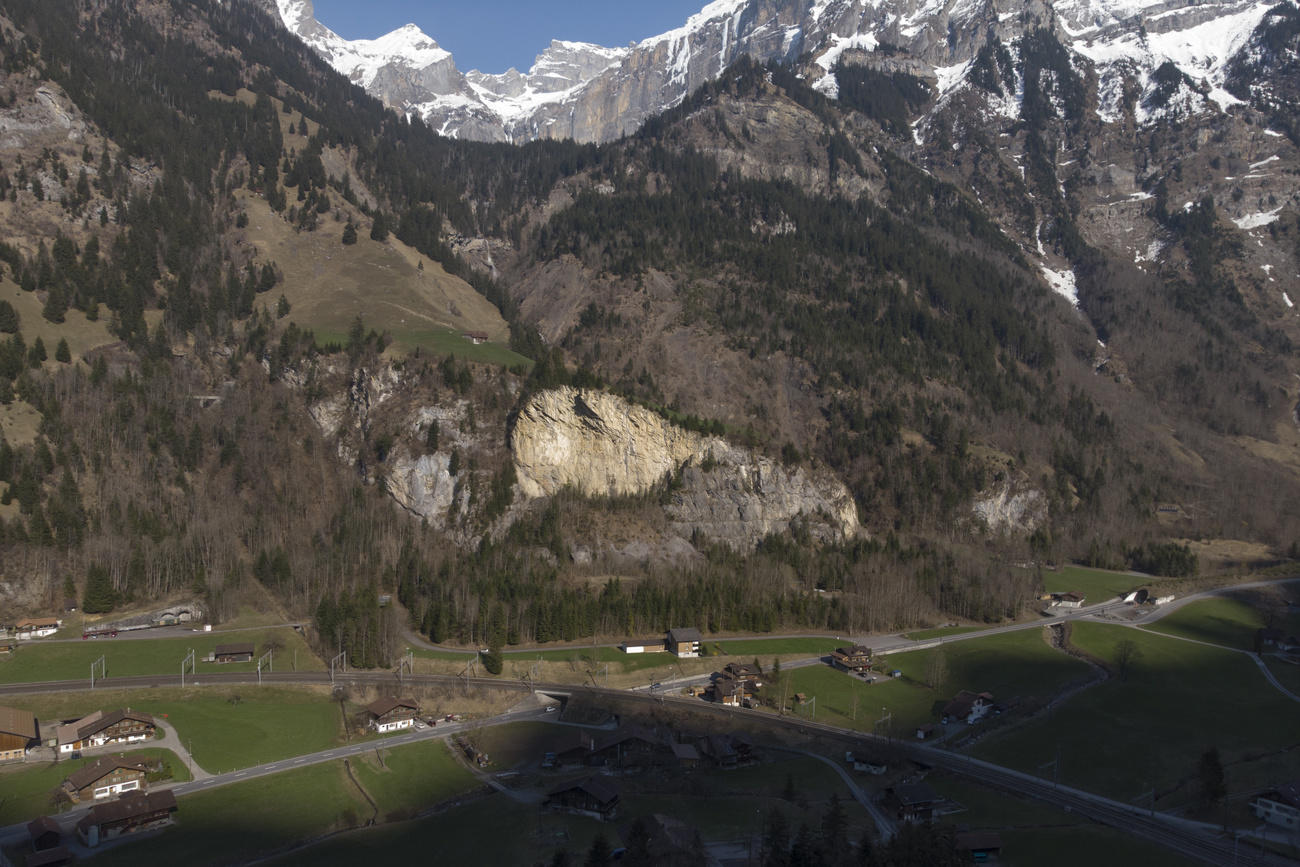



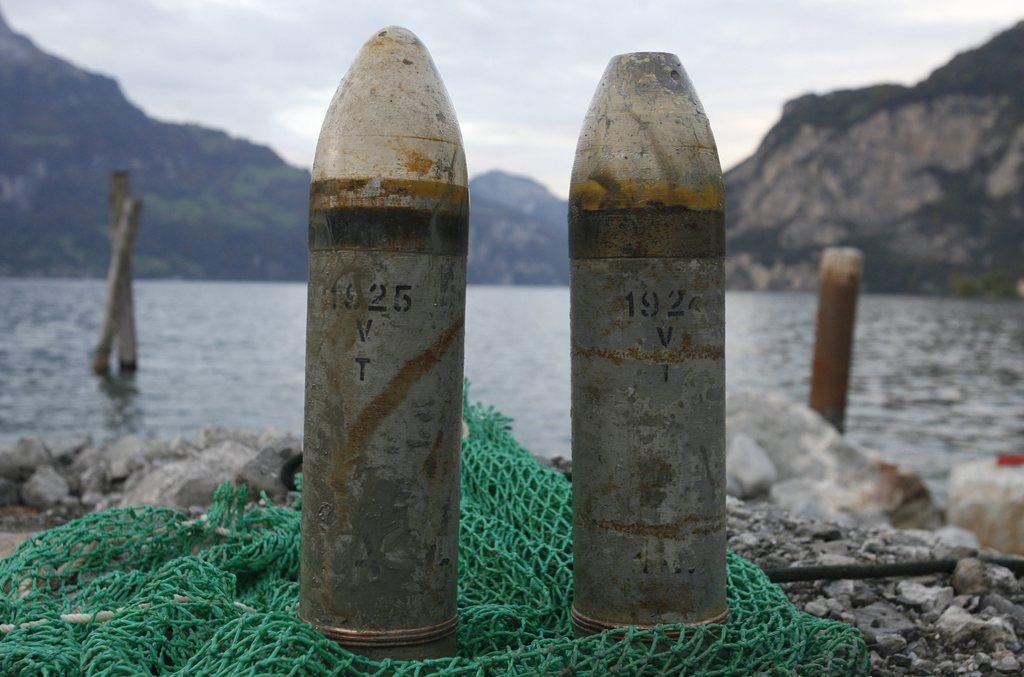
You can find an overview of ongoing debates with our journalists here . Please join us!
If you want to start a conversation about a topic raised in this article or want to report factual errors, email us at english@swissinfo.ch.